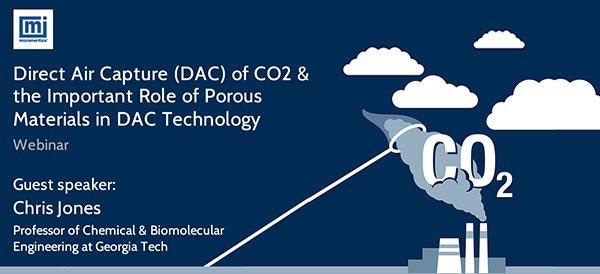In this free on demand presentation, join Professor Christopher Jones, from the Georgia Institute of Technology, for his upcoming webinar ‘Direct Air Capture (DAC) of CO2 & the Important Role of Porous Materials in DAC Technology’.

Image Credit: Micromeritics
Most current climate models suggest that limiting warming to <2°C will require large scale deployment of negative emissions technologies (NETs). NETs, which remove CO2 from the atmosphere, are projected to be needed at a scale of 10 Gt/y by 2050, yet today, virtually none of been deployed. NETs may be natural or technological, with one of the most scalable technological approaches being the direct capture of CO2 from the air, or “direct air capture” (DAC). Because of the ultra-dilute nature of air, the separation of CO2 from this mixture presents a significant engineering challenge.
In this webinar, Professor Jones describes the design and synthesis, characterization and application of oxide-supported amine materials that we have developed as cornerstones of new technologies for the removal of CO2 from dilute (flue gas) and ultra-dilute (air) gas streams. He will also elaborate on the development of these materials, how they integrate into scalable DAC technologies, as well as their key physicochemical structure-property relationships. DAC technologies offer an interesting case study for the parallel design of materials, unit operations, and processes in chemical engineering.